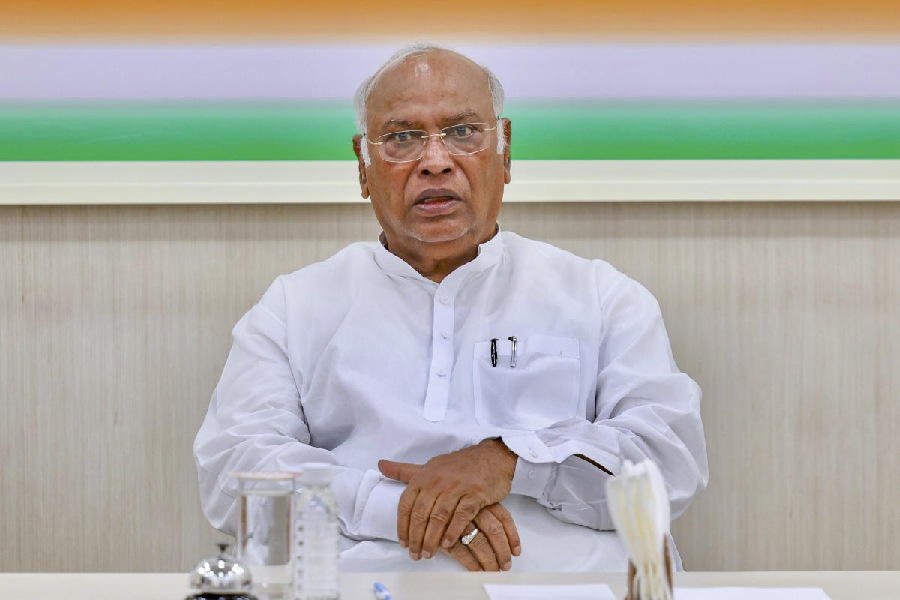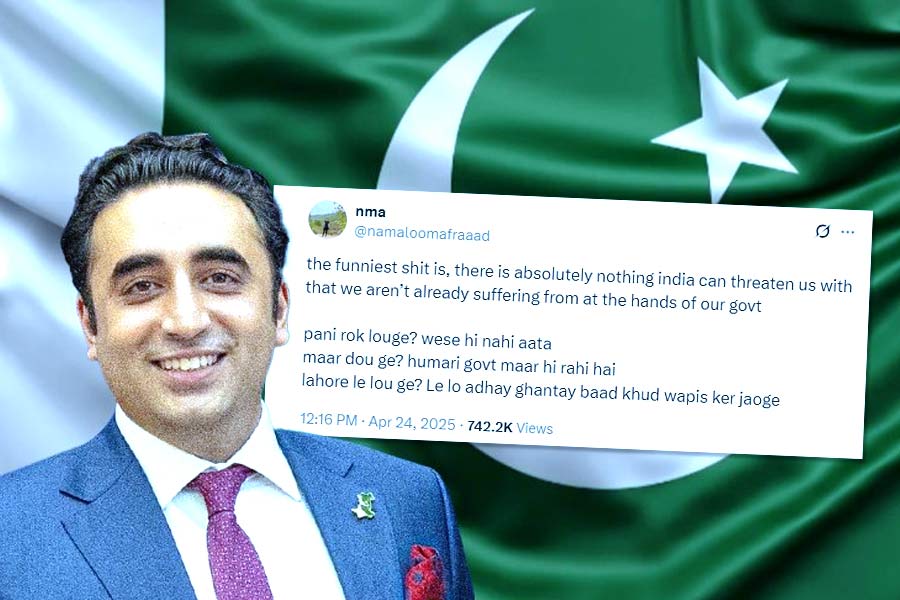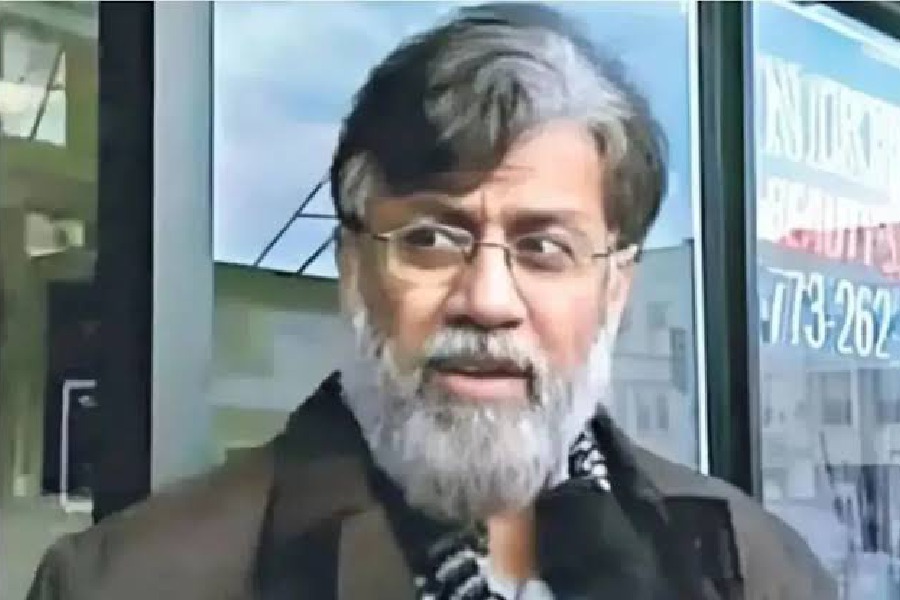 |
Gopal Bhand was not a bald man with a round face, a pot belly and a genius for dirty jokes. He was not a jester, a bhand, but an elegant courtier. He was a member of the court of Raja Krishnachandra Roy of Krishnagore, who had sharp advice for the royal ears that was witty and pragmatic, and who could have appeared with the rest of the court, dressed in a flowing Mughal costume — apparently retro chic in an 18th century Hindu Bengali court in the times of East India Company, to pose for a group portrait.
And even if he did not exist, his descendants do and they live on Sukeas Street in Calcutta.
A book on Bengal’s most famous comic figure, launched at this year’s Book Fair, allows us to arrange the problems around Gopal Bhand by making these and other claims. The launch of Gopal Bhand-er Sandhane by Sujit Roy, co-authored by Subhasis Chowdhury and published by Dey Publications, was attended by people who claimed to be Gopal Bhand’s descendants. No, there was no family resemblance, at least not to Gopal Bhand’s pictures, but their presence raised the crucial question: did then the man, whose bawdy humour was often as much a challenge to authority as to the refinement of enlightenment, really exist?
The book cites another book, Nabadwip Kahini Ba Maharaja Krishnachandra O Gopal Bhand written by Nagendranath Das and published in 1927 (Bangabda 1333) by Kuntalin Press. Nagendranath claims to be a descendant of Gopal Bhand. His direct ancestor is said to be Gopal Bhand’s brother. Those present at the launch are Nagendranath’s family.
Roy’s book reproduces Das’s account of his family in detail. Das claims that Gopal was the descendant of Anandaram Nai, who was a barber by birth, but a tantric sadhu. He caught the eye of Nawab Alivardi Khan and was awarded a jagirdari. His son Dulalchand was the nawab’s physician and surgeon, who snatched a baby Siraj-ud-Daulah from the jaws of death. Dulal had two sons: Kalyan and Gopal. Raja Krishnachandra Roy, the book says, as a high official in the nawab’s government, was impressed by the two talented boys and brought them to Krishnagore and made them responsible officials in his administration.
Gopal was a handsome man and an extremely skilled speaker. He was quick-witted and had great practical sense. He was of a high moral character. With his brilliance, he soon became the head of the Five Treasures (Pancharatna) in Krishnachandra’s court, Das adds.
Gopal had a son who died young, and a daughter, but no trace remains of his direct line.
The latest book reiterates these claims, though it admits that there is no historical evidence. Despite there being many other documents about Raja Krishnachandra’s court, some of them by the redoubtable poet Raigunakar Bharatchandra, another treasure of the court.
Roy suggests, though tentatively, that Bharatchandra was a jealous man: he used all his authority to see that no word was written about Gopal. He doesn’t really explain how if Gopal Bhand did exist — and he is not more than three hundred years old — he has not left a single trace.
But the book points at history’s other agencies. The media, as always, was to blame.
Publishing, and popular arts, such as Nadia’s own tradition of making life-like clay dolls, distorted the life and times of Gopal Bhand through the centuries and turned him into a commodity and a buffoon. With great effect.
Gopal Bhand’s stories have been for more than a century the subject of endless publications. Now he is everywhere — CDs, mobile phone videos. Gopal Bhand is still a big industry.
Historian Gautam Bhadra, who has researched the subject, believes that Gopal Bhand was not an individual. He was the product of urban folklore. The jester exists as part of the royal court. The culture invents him. “The bhand both questions and strengthens the power of the king,” he says.
Bhadra speaks about early Gopal Bhand publications. “At the India Office Library I have read over 250 collections featuring Gopal Bhand. But not one of them was a collection of Gopal Bhand stories per se.”
But he also says that everything does not have to be measured by historical truth. “The politics of fundamentalism reduces every cultural element into a definitive historical origin and contrived facticity,” he says.
Bhadra also points out that Gopal Bhand and other comic figures of Indian origin or popular in Indian culture, such as Birbal or Mullah Naseeruddin, are often credited with the same stock of stories, which is date-defying.
That was in evidence at the Book Fair, too, where several volumes, thin, fat and middling, were devoted to the three men of wit.
Charchapad has brought out an interesting volume on Mullah Naseeruddin, called Mollakkel, Naseeruddiner Kissa. The 250 stories have been collated by Arindam Dasgupta from English translations of the original Turkish and are illustrated by Anup Ray.
The introduction by Dasgupta asks the same question, and about the same trio: did Birbal, Gopal Bhand and Naseeruddin really exist? There is no stark evidence, he says, and then these men have been travelling through centuries and countries to always remain contemporary. So Gopal Bhand is not a stranger to chow mein and Naseeruddin has travelled in an aeroplane as well as the Metro.










